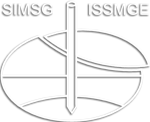Soil-structure interaction of two different configurations of a cut and cover tunnel
Soil-structure interaction of two different configurations of a cut and cover tunnel
This paper investigates soil-structure interactions for a short/shallow cut and cover tunnel will be constructed in Erbil using Plaxis-2D software. In the analysis, different cross-sectional shapes, triangle cut and cover tunnel (TCCT) and horseshoe cut and cover tunnel (HCCT) shapes, were suggested. These two shapes were simulated for a tunnel having a total height of 5.2m, a width of 8m, and a 0.9m permanent lining. The maximum overburden soil above the tunnel's roof or crown was approximately 7.8m. The simulation of the interaction was performed between a coarse-grained soil and the 0.9m concrete lining. The soil parameters were selected under the worst case to provide the safest scenario. The simulation results showed that the horseshoe cross-sectional configuration produced less shear force and bending moment on different parts of the tunnel components, indicating that less concrete and steel bars could be used for the same cross-sectional area of the tunnel, resulting in reduced carbon dioxide emissions into the air.
A. M. Hasan; B. J. Shwan; O. Q. Aziz
18th European Conference on Soil Mechanics and Geotechnical Engineering (ECSMGE2024)
A - New developments on structural design
